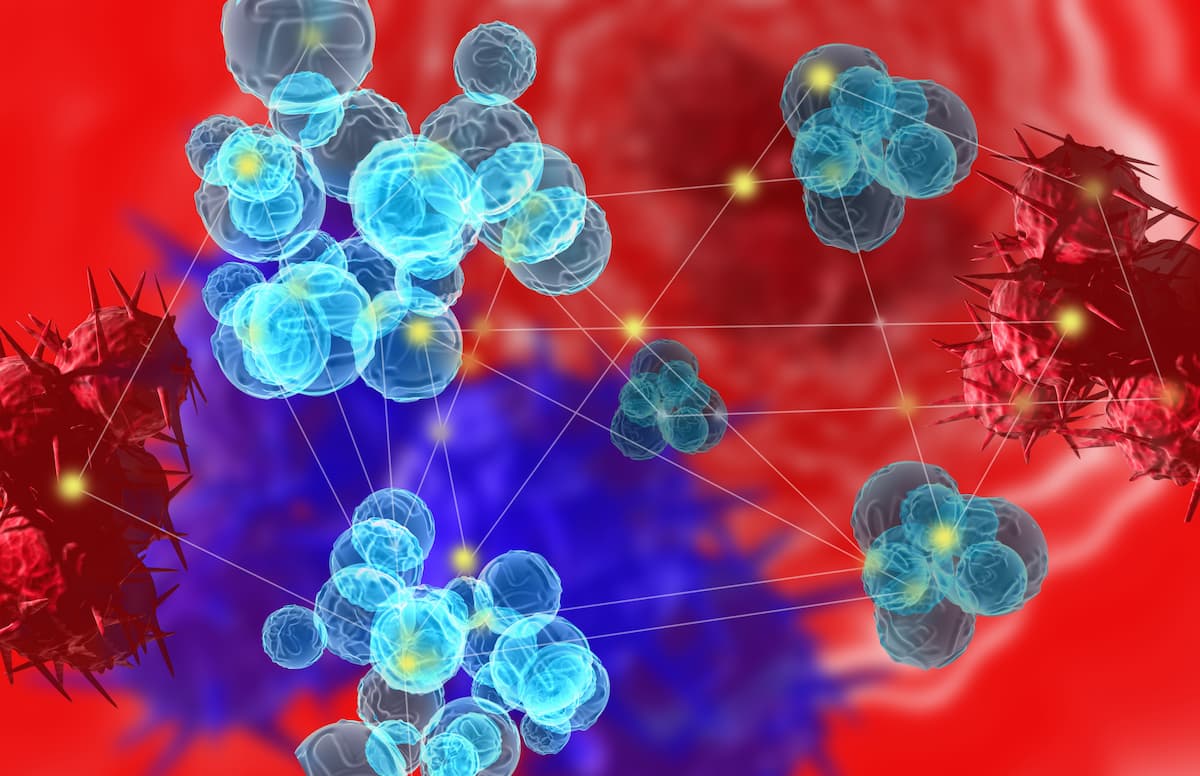Data Confirm Dara-KRd/Double Transplant Benefit in Newly Diagnosed Myeloma
Investigators report a low rate of high-grade hematologic adverse effects following treatment with induction Dara-KRd and consolidation double transplant in patients with high-risk, newly diagnosed multiple myeloma.
"Dara-KRd plus double transplant induced deep response rates and a high MRD negativity rate," according to author Cyrille Touzeau, MD, PhD, a hematologist in the Department of Hematology at the University Hospital of Nantes, Frances.

The safety and efficacy of induction daratumumab (Darzalex), carfilzomib (Kyprolis), lenalidomide (Revlimid), and dexamethasone (Dara-KRd) followed by consolidation double transplant in patients with high-risk, newly diagnosed multiple myeloma was confirmed in the phase 2 IFM 2018-04 study (NCT03606577), according to final results presented at the 2023 International Myeloma Society Annual Meeting.
The complete response (CR) rate/stringent CR rate after the second autologous stem cell transplant (ASCT) was 81%, according to the per protocol analysis. Additionally, the minimal residual disease (MRD) negativity rate at the same time point was 94%.
Lead author Cyrille Touzeau, MD, PhD, a hematologist in the Department of Hematology at the University Hospital of Nantes, Frances noted that response rates continuously improved during the study.
Touzeau also reported that the progression-free survival (PFS) rate was 86% (95% CI, 77%-97%) at 24 months and 80% (95% CI, 68%-94%) at 30 months. Additionally, the 24-month and 30-month overall survival (OS) rates were 94% (95% CI, 87%-100%) and 91% (95% CI, 82%-100%), respectively. In total, 8 patients progressed, and 7 died due to both disease progression (n = 5) and serious adverse effects (SAEs; n = 2).
“Dara-KRd plus double transplant induced deep response rates and a high MRD negativity rate,” Touzeau said during a presentation on the findings. “…These favorable results are in accordance with the GMMG CONCEPT trial [NCT03104842] for our German Colleagues. The safety and efficacy profile of anti-CD38/KRd plus double transplant support this intensive approach for high-risk patients based on MRD positivity in our IFM phase 3 MIDAS trial [NCT04934475].”
The trial included patients who were under 66 years old with newly diagnosed, transplant-eligible multiple myeloma that is high risk with an ECOG performance status of 0 to 2. The trial’s primary end point was getting over 70% of patients to second transplant, with key secondary end points including safety, overall response rate, PFS, OS, and stem cell collection.
Patients were treated with 16 mg/kg of daratumumab intravenously on days 1, 8, 15, and 22 of cycles 1 and 2 followed by days 1 and 15 during cycles 3 to 6. This was followed by 36 mg/m2 of carfilzomib intravenously on days 1 to 2, 8 to 9, and 15 to 16; 25 mg of lenalidomide on days 1 to 21; and 20 mg or dexamethasone on days 1 to 2, 15 to 16, and 22 to 23. After first transplant, patients received 16 mg/kg of daratumumab on days 1 and 15; 56 mg/m2 of carfilzomib on days 1, 8, and 15; 15 mg of lenalidomide on days 1 to 21; and 40 mg of dexamethasone on days 1, 8, 15, and 22. This was followed by the second transplant and 2 years of maintenance treatment with 16 mg/kg of daratumumab every 8 weeks and 10 mg of lenalidomide.
The median patient age was 57 years (range, 38-65). A total of 8% of patients had extramedullary disease, and all patients had high-risk cytogenetics, including del(17p; 40%), t(4;14; 52%), and t(14;16; 20%). Additionally, 60% of patients had 2 or more high-risk cytogenetic abnormalities.
As of this update, 56% of patients were receiving ongoing treatment, and 42% had discontinued due to stem cell collection failure (n = 8), progressive disease (n = 8), AEs (n = 4), and withdrawal (n = 1). Although stem cell collection originally took place after cycle 6, the study protocol was later amended to take place after cycle 3. It was reported that 16% of patients were unable to proceed to tandem transplant because of insufficient stem cell collection.
In terms of hematologic AEs, common any-grade events included neutropenia (48%), anemia (34%), and thrombocytopenia (36%); these were also the most common grade 3/4 events (44%, 22%, and 24%, respectively). Frequent any-grade non-hematologic AEs were infection (64%), gastrointestinal (GI) disorders (62%), and peripheral neuropathy (20%), with grade 3/4 AEs including infection (14%) and GI disorders (10%).
Reference
Touzeau C, Perrot A, Hulin C, et al. Daratumumab, carfilzomib, lenalidomide, and dexamethasone with tandem transplant in high-risk newly diagnosed myeloma patients: final results of the phase 2 study IFM 2018-04. 2023 International Myeloma Society Annual Meeting; September 27-30, 2023; Athens, Greece. Abstract OA-54.
Navigating AE Management for Cellular Therapy Across Hematologic Cancers
A panel of clinical pharmacists discussed strategies for mitigating toxicities across different multiple myeloma, lymphoma, and leukemia populations.